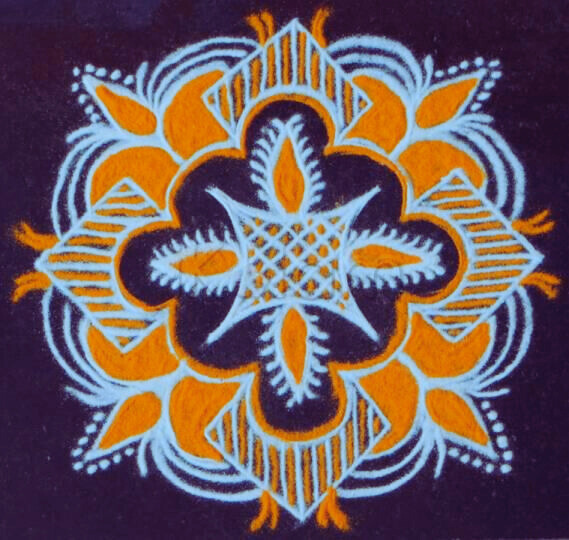Mandalas, with their origins in dharmic traditions, transcend cultural boundaries. They serve as symbolic representations of the universe and the cyclical nature of existence. Used as aids for meditation and contemplation of spiritual truths, they guide practitioners towards inner awareness, regardless of their cultural or spiritual background.
Mandalas are not just simple circles. They are intricate designs, often featuring vibrant colors and depictions of deities and spiritual scenes. These elements and their circular shape symbolize the universe, psychic order, and the enlightened mind. The beauty and complexity of mandalas, emphasizing the interconnectedness and harmony of the cosmos, are truly awe-inspiring.
They are intricate designs and are tools for meditation. They represent the universe and aid in contemplating spiritual truths. Mandalas’ intricate designs and symbolic elements guide practitioners through meditation, helping them explore the nature of existence and the path to enlightenment. By visualizing mandalas in the mind’s eye, practitioners can achieve deep concentration and spiritual insight, empowering them in their spiritual journey.
According to Yoga Darshana, mandala refers to a specific cycle or period of around 40 to 48 days, considered the natural duration for many physiological processes in the human body. The word ‘mandala’ means a region, area, or cycle in Sanskrit. The yogic tradition denotes approximately 40 days in which the human system completes one physiological cycle. It is explained that introducing anything new into your system, such as a sadhana (spiritual practice) or kriya, takes about 40 days for it to become firmly established in your physiology. This concept is reflected in Ayurvedic medicine, where medications are typically prescribed for 48 days to allow the medicine to take root in one’s system throughout one mandala cycle.
Practicing a sadhana consistently for one mandala (40-48 days) ensures that it becomes ingrained in your system and starts functioning deeper. Yoga programs often provide mandala support through guided practices, tracking, and reminders for 40 days to help establish new practices over a complete mandala cycle. In essence, a mandala is the specific 40-48 day cycle that the human physiology undergoes. It is important when establishing any new spiritual practice or yogic sadhana in one’s life for it to take root at all levels—body, mind, and energy.
Mandalas represent the universe and aid in meditation and contemplation of spiritual truths. Despite their differences, yantras and mandalas provide powerful visual tools that enhance spiritual practices, guiding practitioners toward greater spiritual awareness and transformation. Each structure is rooted in mathematical precision, connecting and representing the microcosm and the macrocosm. [See the posts on Vaastu Shashtra and Temple Geometry for related information.]
The northern Indian art of Rangoli and the Southern Indian folk art of kolam are forms of mandalas. Kolams are geometric diagrams drawn on the ground using rice flour by women in Tamil Nadu and other parts of Southern India. Like mandalas, these circular designs represent the integral nature of earth, sky, and spirit, linking the personal/familial realm to the divine and cosmic principles created within houses, entrances, and temple premises. There were different kolams used for different times of the months and different days of the week, though very few retain this knowledge. Kolam serves as an invitation into homes and an offering to deities and all beings, promoting harmonious existence. This art employs symmetry principles and mathematical concepts like fractals, with millions of Indian women practicing it daily as a way of life.
Creating a kolam or mandala is a meditative, ritualistic practice cultivating qualities like focus, patience, and connection with the sacred. These art forms are meant to be created anew each day, representing the cyclical nature of life and the universe, though this art is almost lost these days. Traditionally, kolams are believed to invoke auspiciousness and divinity and ward off negativity or evil.
Typical mandalas found in other dharmic spiritual traditions include the Sri Yantra, a sacred geometric pattern representing the cosmos, and the Mandala of Compassion (Chenrezig Mandala), used in Tibetan Buddhism for meditation. Another Tibetan Buddhist mandala is the Kalachakra Mandala, symbolizing the cycles of time and the universe. The Medicine Buddha Mandala is employed for healing practices, while the Wheel of Dharma (Dharmachakra) represents Buddha’s teachings. The Vajrayogini Mandala symbolizes transformation, and the Lotus Mandala represents purity and enlightenment. The Five Dhyani Buddhas Mandala aids in meditation for spiritual realization. Tibetan Sand Mandalas, depicting impermanence, are crafted using colored sand in rituals. Lastly, the Cosmic Mandala, reflecting interconnectedness, finds use in New Age spirituality. These mandalas serve as visual aids for meditation, contemplation, and spiritual growth across diverse traditions.
Image: vijaysowmya
